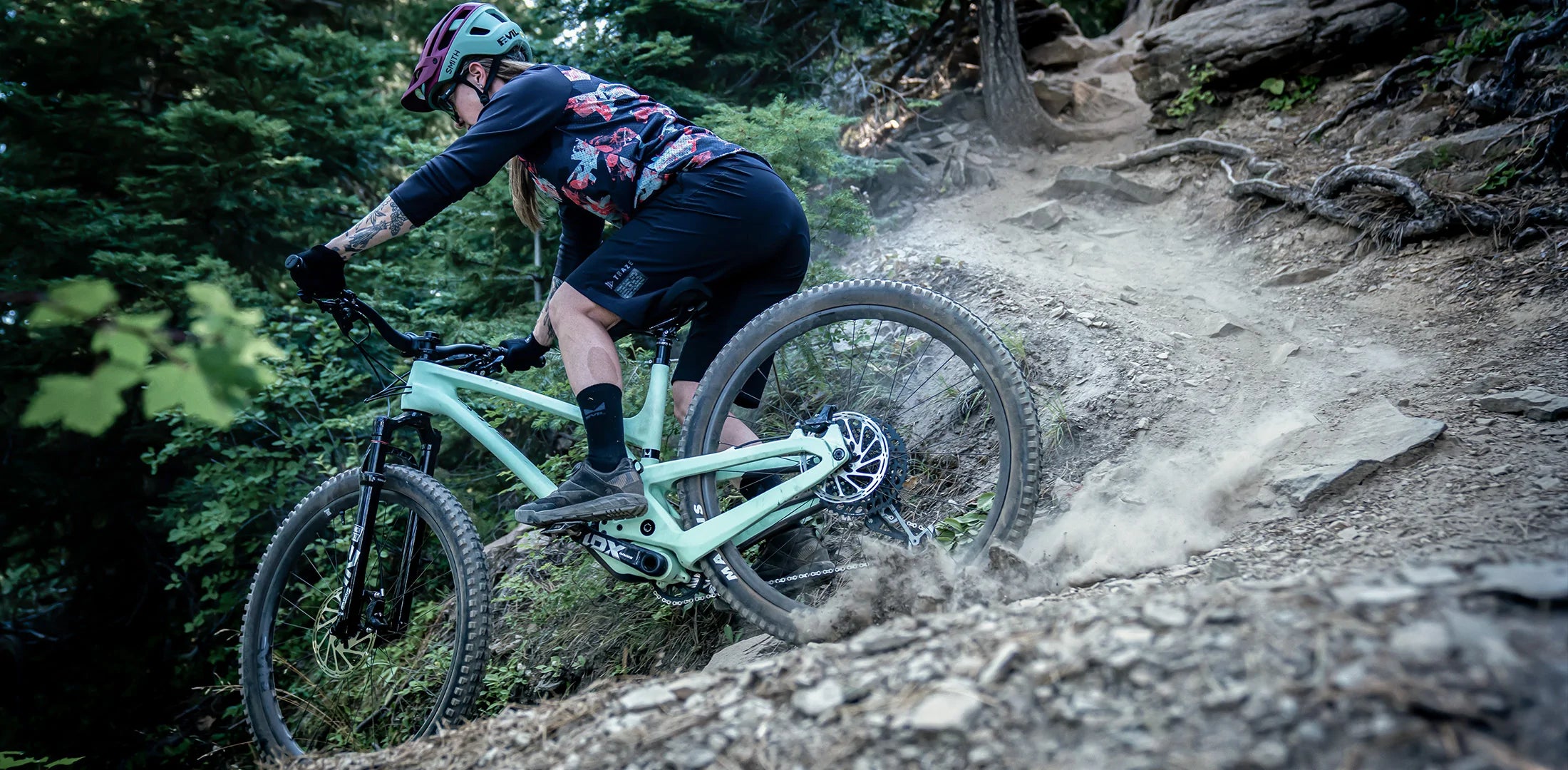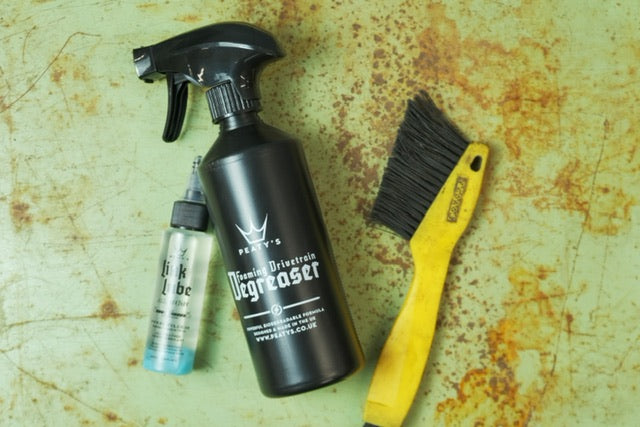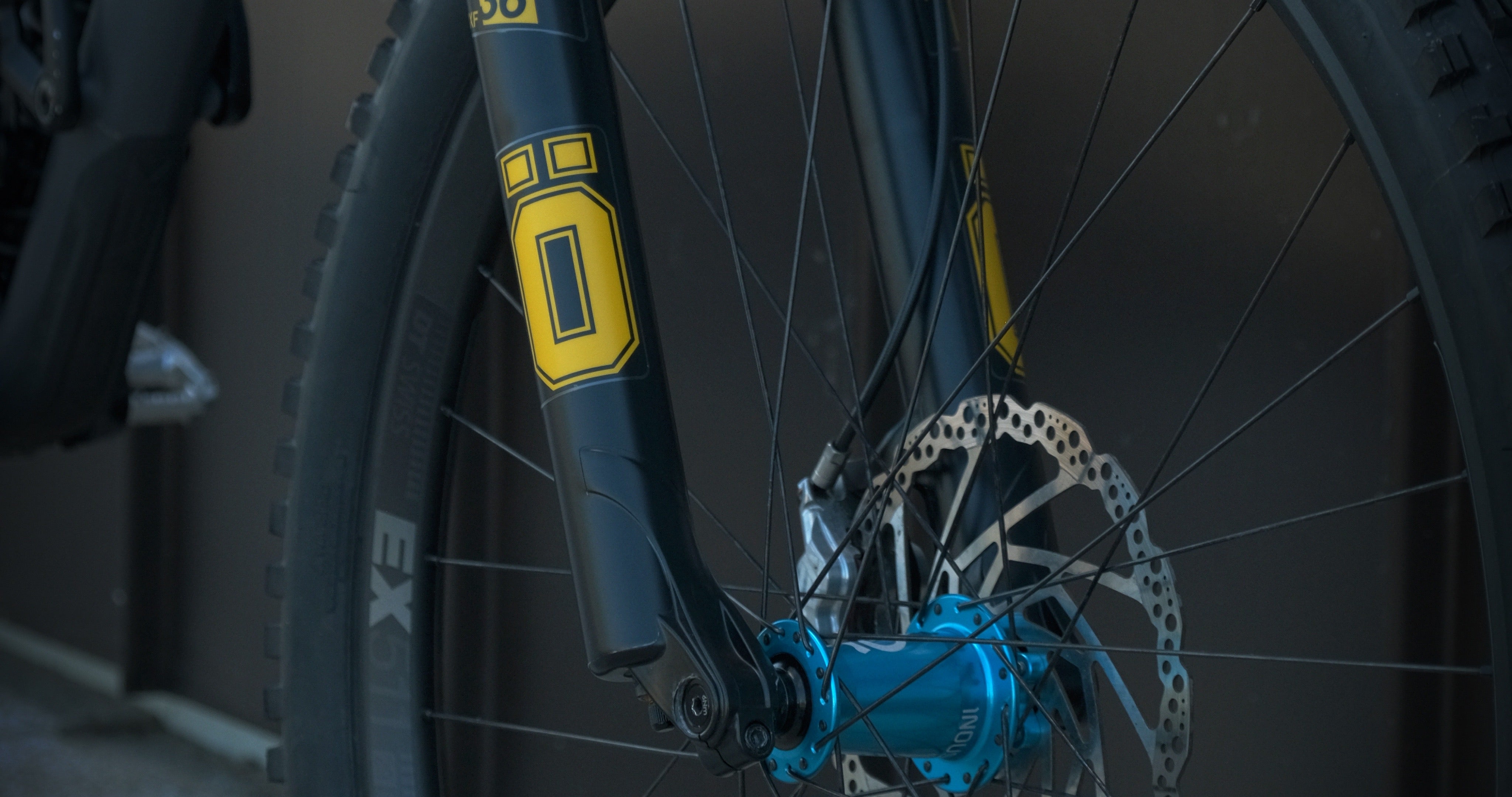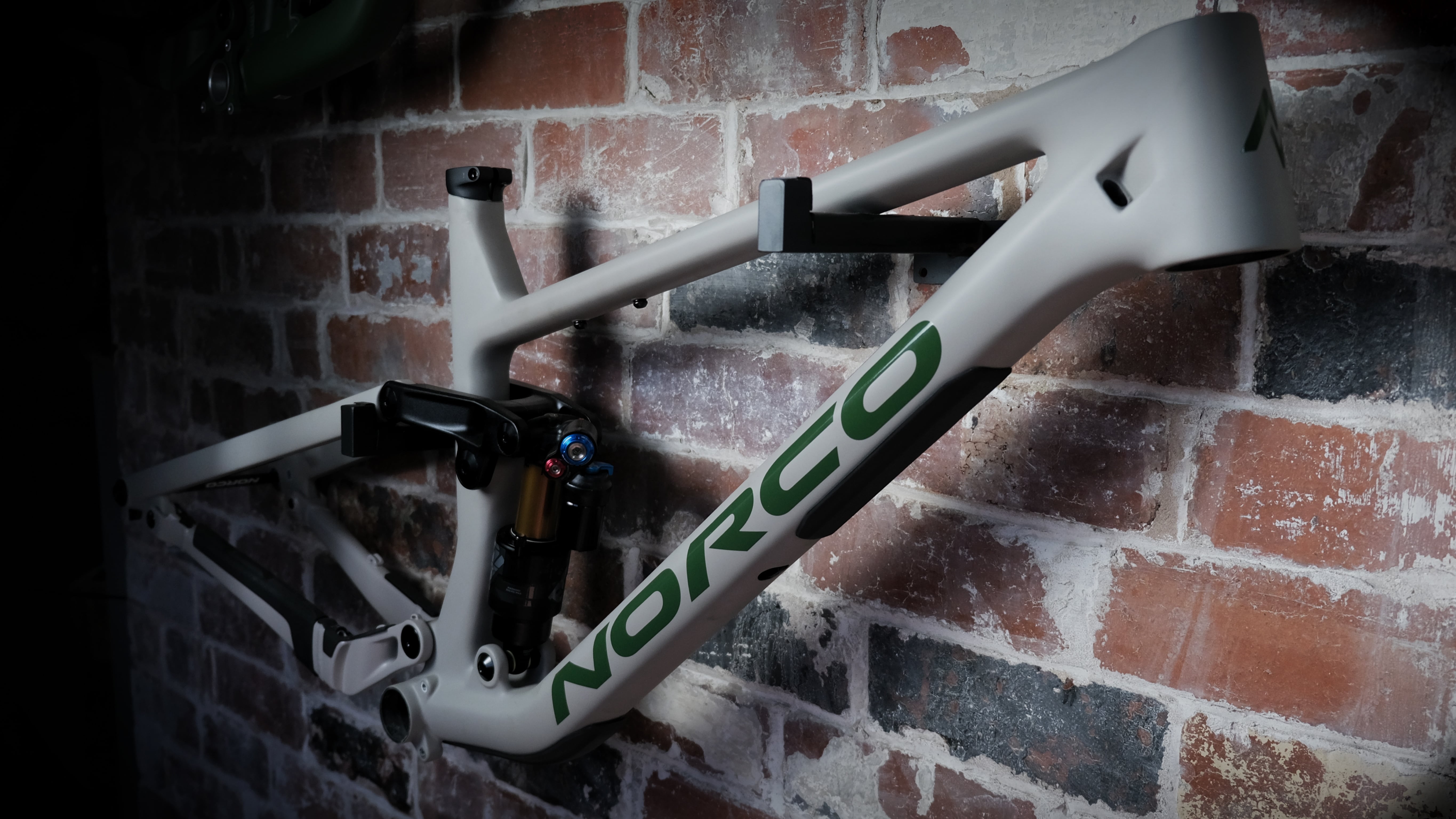How To Buy A Mountain Bike | Choosing The Right Bike
Choosing The Right Type Of Mountain Bike
Probably the most important factor when it comes to enjoying your ride. Confusing beginners (and even well-versed veterans) with subcategories and crazy specific genres is far from ideal for the industry and us retailers; what even is a ‘Down Country’ bike?
Anyway, back to the point, you’ll find plenty of these comparisons online but hopefully, our views will help shed some extra light on this topic.
Here’s the gist;
- - What type of riding are you doing?
- - Hardtail or full suspension?
- - How much suspension do you really need?
- - Blurring the category lines
- - Over bike or under bike?
- - Are e-bikes worth it?
I’ll be going over all of these topics throughout this blog, hopefully, I can explain them well enough but remember we’re just a phone call away if you’ve got some specific questions!
We’ll start off easy, aiming at beginners and progressively get more in-depth and technical, so maybe skip the first bit if it’s below your pay grade!
What Type Of Riding Are You Doing?
Right so first off, the type of riding! This can range from complete novice canal cruising to pro-level Redbull rampage type sh*t. Very, very different types of mountain bikes are required for each task. I hate to break it to you but there’s no such thing as a ‘do it all’, even when we’re just talking about mountain bikes.

Local canals and bridleways rides can be great for improving fitness and mental health, a full suspension bike definitely isn't a requirement.
Bikes more suited to casual tame riding will be cheaper, so if your budget is tight and you’re just getting started, perhaps this is the place to look. You can always advance from here.
Straight away we can be sure that a hardtail mountain bike is perfect for blasting up and down local canals and bridleways, you don’t need much suspension travel either. Furthermore, twenty-nine-inch wheels are your best friend due to the high speed and momentum-maintaining characteristics they possess. The fast accelerating benefits of 27.5 are just not enough to outweigh the cons in this circumstance.
So, you’ve been riding a while and you think the limitations of your basic hardtail are holding you back? You’ve just entered the ‘trail’ zone, or as some call it ‘all-mountain’. Either way, you feel it’s time to advance onto something more challenging and you need a more capable bike for that!

Aggressive hardtails can be a lot of fun, they are also great for learning the correct skills before moving onto a full suspension bike.
Hardtail Or Full Suspension?
Now, you’ve got a big decision to make, hardtail or full suspension? Enjoying the speed and simplicity of your hardtail? An aggressive hardtail featuring progressive geometry, more travel and maybe a change in wheel size could be the way forward… Up-to-date geometry will aid you in tackling steeper descents while keeping the bike nimble in conjunction with 27.5-inch wheels (or maybe just the rear) manoeuvres will be tighter and easier also.
Got your eyes set on a full-suspension bike? Well there’s plenty out there and believe it or not, they can ride very, very differently.
How Much Suspension Do You Really Need?
Full-suspension bikes and downhill bikes are not the same thing, despite what local kids might say, there’s some pretty big differences!
Trail riding, which as we just went over, can be done on a hardtail so clearly it doesn’t require the 200mm of rear suspension travel that downhill bikes feature. In fact, I reckon you don’t need more than 140mm of front and rear travel to tackle even the most challenging sections you’ll encounter trail riding.
I suppose now would be a good time to explain what I mean by ‘trail’ riding, I’m referring to those longer rides covering distance. For example, it could be from an all-day epic in the Peak District to an after-work ride around the local woods and bridleways. There'll be some more technical sections heading down but climbing capabilities and pace is still important.
Enduro riding, now this is the steep, scary stuff. Arguably the most populated genre of mountain biking, it’s what I do anyway, and everyone I know. Effectively this is riding up a hill to come back down as fast, technically or just enjoyably as possible. It’s all about going downhill while not losing climbing and all-day riding capabilities. However these are not the main focus, of course, modern Enduro bikes (bikes featuring 150-180mm of travel) are ridiculously versatile and in fact, if you go to a bike park you’ll see more Enduro bikes than downhill bikes. They are just that good at descending. I’m riding the current Evil Insurgent, and it’s mint. Having 168mm of travel on the rear, it’s obviously a ripper downhill but I was shocked by its climbing capabilities, anyway, this isn’t a bike review.
This video includes one of our 120mm trail bikes and 170mm enduro bike. both hitting the same sections. Proving trail bikes are crazily capable these days
Blurred Lines
The point I’m getting at is it’s honestly difficult to go wrong with modern mountain bikes. While there are categories and genres it’s easier than ever to blur the lines.
Most modern 140mm ‘trail’ bikes can comfortably handle bike parks with a confident rider in control. Similarly, pedalling a 170mm Enduro bike up and down singletrack slopes isn’t a massive hindrance like it once was thanks to forward-thinking geometry and massive changes to the pedalling platform of new bikes. As I mentioned, the climbing capabilities of my new
Earlier I mentioned ‘Down Country’ bikes, which are supposed to be a cross country bike that’s more suited to going down rather than up. For example, the Evil Following falls into this genre with its more aggressive geometry but it could also be called a ‘trail’ bike, this is where it gets confusing and genres merge. Probably to benefit the sales, but the hype branding causes confusion for beginners. Don’t worry, you’ll get used to it all. Besides, these subcategories and genres are targeted towards more experienced riders as they fine-tune their riding style and preferences.

The Evil Following, a 120mm trail blazer. This bike started the aggressive short travel trail bike movement
So, that’s the most popular types of mountain biking covered but I figured I’d end with some points to keep in mind, some recommendations and my personal opinion on a few bits.
First off, don’t get hung up on weight. I'm not talking about your beer belly, the bike! Especially if your riding style is more gravity oriented, getting up the hill in the fastest time and super efficiently isn’t a worry. Additionally, the added weight can aid in high-speed stability and cornering, in fact, a heavier bike can actually aid suspension performance. This became very apparent with E-bikes taking over recently, due to the extra weight keeping suspension sat in travel, but that’s a topic for another day.
Over Bike Or Under Bike, That Is The Question
I’ve hinted at this next point already but personally, I think being over-biked (to some extent) is better than being under-biked. Now, I’m not saying I’d prefer to ride an Enduro bike in an XC race. I’m saying if I knew I wanted an Enduro bike I’d choose a 170mm travel bike over one featuring 150mm of travel. Simply due to the fact I put downhill performance over a slight uphill benefit. The latter of the two bikes may begin to struggle at a bike park, being thrown into some big hits, but I’d be confident smashing a 170mm rig on any DH track, knowing I’ll have to put a little more effort into the climb back up. Now, this is the point where skill comes into the equation, a confident rider who’s well in tune with their bike may prefer shorter travel in their given field. Usually, due to the additional manoeuvrability gained, they are confident enough to not need the extra suspension travel many of us rely on as a ‘get of jail-free card’ when things get a bit sticky…
Are Ebikes Worth It?
Absolutely! When we go out riding these days you can guarantee at least 50% of bikes are E-bikes, that percentage of people can't be wrong.
The stigma around E-bikes has pretty much gone. No longer do you hear the mutters "cheater" as you ride past, and rightly so. E-bikes are great for being able to go further in the saddle. They are also great for people wanting to get back into it, or just starting out. There is nothing more demotivating than a steep climb if you're not used to it, but an e-bike will assist you up that climb. Keeping the riding fire alight because the fun is going down right?
Both styles of bike have their place, the fittest of riders that ride all the time may not want that assistance. That's cool too, but I feel the percentage of E-bikes on the trail is only going to increase as the bikes get cheaper and sleeker. Some current E-bikes like the Pivot Shuttle SL don't even look like E-bikes. I think we will see more of this trend yet.

Pivot Shuttle SL - The future look of E-bikes? Is it a standard MTB or an EMTB? Hard to tell
Final Word
At the end of the day, I cannot recommend enough having a demo! If you’re looking at the higher-end market you’ll have a decent idea of the bike you want, most good bike shops will offer demos of some kind. Occasionally the manufacturers will also offer demo days, so keep an eye out!
MEET THE AUTHOR
George Liston
Some say George can recall the bearing code of every bearing invented. Possibly not, but why not test him?
Cykel House's chief mechanic, trail whippet and all round good guy. George loves a decent tech trail at warp speed. He started volunteering at Cykel House when we first opened, he then continued as an apprentice earning the highest CYTECH accredited qualification you can get. Often what he doesnt know, isnt really worth knowing.
Interesting fact - George is a member of the local knitting club and can knock out a banging cardigan
Likes - A tech trail, chicken and flat bar tricep push downs
Dislikes - Cold weather, cup and cone hubs and the meleculour structure of a baked bean

Continue Reading

How to Clean Your Drivetrain: A Step-by-Step Guide for Bike Maintenance
Subscribe To Our Newsletter
The latest news, events and stories delivered right to your inbox



